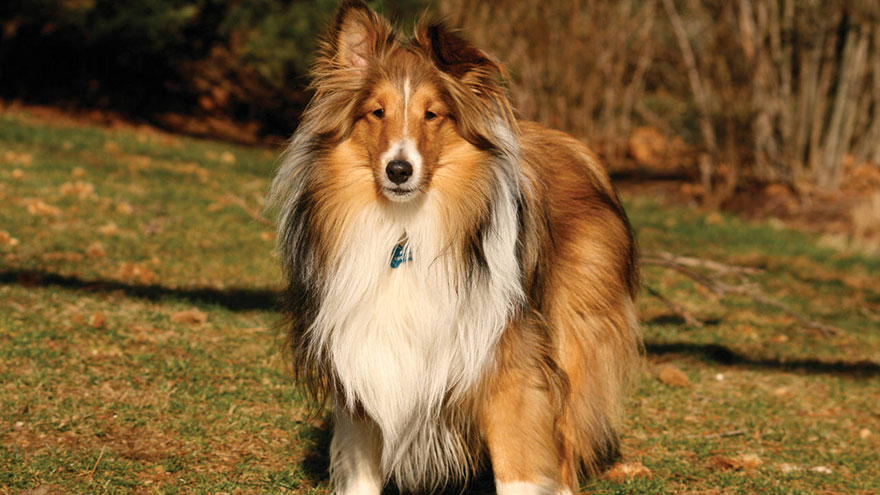Shetland Sheepdog : 10 Most Common Questions
The Shetland Sheepdog (Sheltie) is a loyal companion, a good watchdog and a very intelligent working animal as well. These traits have made the Sheltie one of the more popular dogs in recent years.
In addition, this breed is blessed with beautiful colors and a wonderful coat that makes it resemble a Collie. However, the Sheltie is indeed a completely separate breed.

1. What is the history and background of the Shetland Sheepdog?
The breed gets its name from the Shetland Islands off the coast of Scotland. The Sheltie descended from the Scottish rough Collie and the Yakkin from Iceland.
The Sheltie has been a herding dog and guard dog for cattle and sheep for more than 400 years. The breed was introduced in the U.S. around 1911.
2. What special uses does the Sheltie have today?
In addition to being a great pet and companion for both adults and children, the Shetland Sheepdog is excellent at tracking, herding, and agility competition. Shelties are of medium size and very energetic.
Their great intelligence makes them ideal for training if the owner and trainer are patient and consistent. However, most experts emphasize that only about 50% of the dogs born to this breed today have the strong natural herding instincts of the ancestors.
3. Is it true there are miniature Shelties?
No, to all clubs and organizations dealing with Shetland Sheepdogs, a Sheltie is a Sheltie, regardless of size. In fact, smaller and larger dogs can be born to the same litter.
Top breeders attempt to use only those parents that are of the simply average size and avoid using dogs that are extremely small or large.
4. How big does the Sheltie get?
The size of an adult Shetland Sheepdog can range from 13 inches to 16 inches at the withers. Weight can range from 15 pounds up to 27 pounds and more.
The ideal size is from 15 pounds to 20 pounds.
5. Does the Sheltie have a good temperament?
Most Shelties that come from a good breeder have been socialized in early life so that they are excellent family pets and great companions. This breed is generally easy to train and is willing to learn both tricks and basic obedience.
Shetland Sheepdogs born in recent years have shown a greater range of personality and temperament, but some of this is due to the number of puppies bred by inexperienced people in “puppy mills.” With the right breeder and the right training, a Sheltie should be loyal, friendly and energetic, but not overly aggressive or shy.
6. What are grooming requirements for the Sheltie?
Shetland Sheepdogs do not need a great amount of grooming, though the long coat will need to be brushed regularly. Some shedding will occur twice a hear, especially as the undercoat changes.
During shedding, it may be necessary to brush the coat daily. This breed can suffer from some skin ailments so bathing should be done only when necessary.
7. What colors should I look for in the Sheltie?
There are three recognized patterns for the Shetland Sheepdog: sable, which can range from tan or gold to brown; tri-color, which includes white, brown and black; and blue merle, which is a coat that has dappling of gray and black.
Experts say it is very important not to breed Shelties indiscriminately to produce certain unusual colors because the dogs frequently suffer from serious health problems.
8. What type of exercise is good for the Sheltie?
Since this is a smaller, athletic working dog, regular exercise is necessary. Long walks, playing with a ball or Frisbee, and agility competitions are excellent for this breed.
However, new owners should be careful to work with a breeder that has knowledge of the traits of his dogs. This can help avoid problems with a Sheltie that does not have natural herding instincts or is happier with a quiet, less active lifestyle.
9. What should I feed my Shetland Sheepdog?
Many owners of purebred dogs are now feeding only fresh foods, such as meats, vegetables and some fruits. Others choose to feed only the best commercial foods, those with the proper amounts of protein, fat and other nutrients.
It may be best to avoid lower cost commercial foods that have high grain content. Some dogs, including Shelties, have allergies to the grain and have sensitive stomachs that will tolerate only certain types of food.
10. Shelties can be a problem because they bark a lot. What can I do?
This can vary with each dog, but Shetland Sheepdogs are known to bark with a loud or penetrating sound. This may have developed because of their natural habitat close to the sounds of the ocean and the high winds on the open ground where they lived. The dog also had to be heard over the noise of the sheep and cattle they herded.
A reputable trainer can help you reduce the amount of barking and direct it to be used only in guarding or watchdog situations. Shelties are eager to learn, though somewhat sensitive. Patience is the key in changing Sheltie behavior.
Read More About Shetland Sheepdog
- Shetland Sheepdog Breed Information
- Shetland Sheepdog Training Guide
- Shetland Sheepdog Health Guide
- Owning A Shetland Sheepdog : Breeder Recommendations

